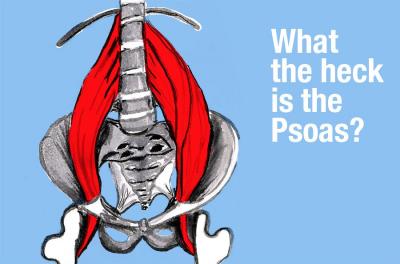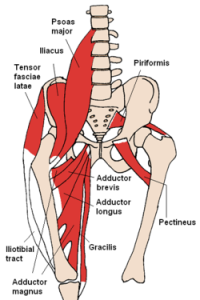

by Kalee Brown, Collective Evolution
We have published many articles on the concept that we, as human beings, house a soul in our physical bodies and that our eyes are the gateway to this essence. We’ve talked a lot about the relationship between the mind, body, and soul and the importance of keeping it balanced and in harmony. However, have you ever contemplated what the physical muscle of the soul could be? Well, therapist and filmmaker Danielle Prohom Olson has; in fact, she claims that by relaxing your psoas, or what she terms “the muscle of the soul,” you can reconnect with the powerful energy of the Earth.
What Is Your Psoas?
The correct pronunciation of the psoas is “so-az.” The psoas is literally the deepest muscle of the human body. You have one on each side of the spine, attached to your sides and spanning laterally from the 12th thoracic vertebra to each of the lumbar vertebra. It then moves through the abdominal core and the pelvis without attaching to the bone, and then connects to the iliacus muscle in a common tendon at the top of the femur (thigh) bone.
The psoas is crucial for proper body movement, as it affects our structural balance, muscular integrity, flexibility, strength, range of motion, joint mobility, and organ functioning. Without your psoas, you wouldn’t be able to maintain proper posture or move your legs to walk. While you’re walking, a healthy psoas moves with ease, continuously massaging the spine as well as the organs, blood vessels, and nerves of the trunk. This process promotes the flow of fluids throughout the body and creates the feeling of being grounded and centered.
The psoas is the only muscle to connect the spine to the legs. The psoas is also linked to the diaphragm through fascia (connective tissue), impacting our fear reflex and breathing. This is due to the connection between the psoas and the reptilian brain, the most ancient inner part of the brain stem and spinal cord.
Liz Koch, author of The Psaos Book and founder of Core Awareness, explains, “Long before the spoken word or the organizing capacity of the cortex developed, the reptilian brain, known for its survival instincts, maintained our essential core functioning.”
The diagram below shows the location of the psoas in the human body:

Why The Psoas Is Considered the Muscle of the Soul
Prior to learning about the connection the psoas has to energy, Olson started implementing more hip opening poses at the beginning and end of her yoga practice. Although her intention was simply to relax her psoas, in doing so, she experienced a significant decrease in tension and a newfound strength. Once she was exposed to Koch’s research and Taoism, she connected the dots between the psoas, stress, and spirituality and started referring to the psoas as “the muscle of the soul.”
Taoism is a philosophy, often referred to as a religion, that attempts to explain our relationship to nature and the universe. Practicing Taoists heavily focus on genuineness, health, immortality, detachment, spontaneity, transformation, and spirituality. Within the Taoist tradition, the psoas is considered the seat or the muscle of the soul and resides in the lower “Dan tien,” one of the human body’s most prominent energy centres. It is said that a flexible and strong psoas helps ground us and circulate energy throughout the body.
The Relationship Between Stress and the Psoas and How to Release It
Stress, anxiety, and fear are typically perceived as mental health issues, thus doctors often prescribe medication that target the mind. Although this approach has helped many people, we should be looking at stress through a broader lense and striving to understand what causes these emotional imbalances in the first place, including the relationship stress has to the psoas. Through their research, Koch and Olson have both discovered that by opening the psoas, one can release stress and tension through it.
Many people chase after the fast-paced, high-stress lifestyle that is the “American Dream,” characterized by spending most days at a “desk job” and most nights partying until the sun rises, then repeating the process. Koch believes that chronic triggers and tightening of the psoas are products of this unhealthy lifestyle as well as other common elements of modern day life, such as the chairs we sit in and the constrictive pants and shoes we wear. If we continuously contract the psoas as a result of increased stress or tension, the muscle becomes shorter, causing negative side effects such as lower back pain, sciatica, disc problems, scoliosis, hip degeneration, menstruation pain, infertility, and digestive issues.
If you suffer from any of these health issues or are looking to decrease or prevent stress, try the following yoga poses that help open the psoas:
- Conscious Savasana (lay in this pose and surrender to the pull of gravity)
- Low lunge and high lunge (Crescent pose)
- Pigeon pose
- Sitting cross-legged
- Tadasana (Mountain pose)
- Vrksasana (Tree pose)
If you’re looking for more ways to decrease your stress levels, check out these CE tips here!
Image source: https://www.davidwolfe.com/your-souls-muscle-could-be-the-trigger-for-fear-anxiety/

